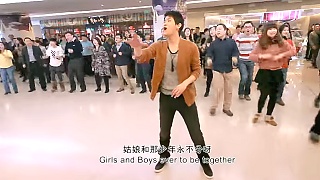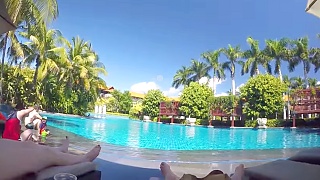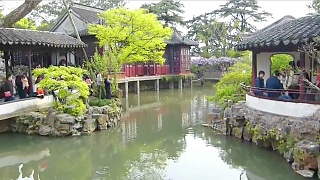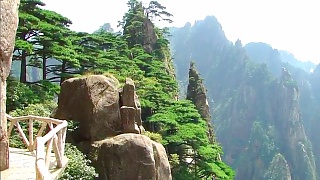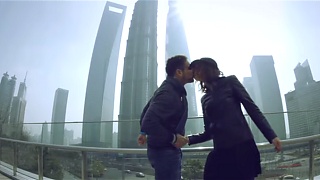
|
The Hakka Tulou are unique, fortress-like buildings located in the mountainous areas of Fujian Province. These large, circular or rectangular earthen structures were built by the Hakka people, an ethnic group known for their migratory history. The Tulou are notable for their communal living spaces, defensive features, and remarkable architectural design.
Who are the Hakka People?
The Hakka are a subgroup of the Han Chinese, known for their migratory history and resilience. Originating from northern China, the Hakka migrated southwards over several centuries, settling in the mountainous regions of southern China. The name "Hakka" means "guest people," reflecting their history of migration and settlement in new areas.
Hakka culture places a strong emphasis on education, family unity, and community cooperation. Despite facing hardships and displacement, the Hakka have maintained their unique cultural identity and traditions.
Historical and Cultural Background
Origins and History
The construction of Tulou began during the Song Dynasty (960-1279) and continued through the Ming (1368-1644) and Qing (1644-1912) Dynasties. These buildings were designed to provide protection and communal living for large families or clans, often housing up to 80 families in a single Tulou.
Cultural Significance
The Tulou reflect the Hakka people's need for security and their communal lifestyle. The buildings are designed to be self-sufficient, with living quarters, storage areas, and defensive structures all incorporated into the design. The Hakka culture values family unity, and the Tulou are a physical manifestation of this principle.
Architectural Features
Design and Structure
Tulou are typically large, multi-storied structures built with thick earthen walls that provide insulation and protection. The outer walls are made from rammed earth, mixed with stone, bamboo, and wood, making them extremely durable. The interiors are organized around a central courtyard, with rooms for living, storage, and communal activities.
Defensive Capabilities
The design of the Tulou includes defensive features such as narrow windows and a single, reinforced entrance. These elements were intended to protect the inhabitants from bandits and wild animals. The circular shape of many Tulou also allows for effective communication and defense within the building.
Communal and Social Aspects
Living Arrangements
The Tulou were built to house entire clans, with each family having its own designated area within the structure. The central courtyard served as a communal space for social activities, celebrations, and meetings. This layout fostered a strong sense of community and cooperation among the inhabitants.
Self-Sufficiency
The Tulou were designed to be self-sufficient, with areas designated for food storage, livestock, and agricultural activities. This self-sufficiency was essential, as the Tulou were often located in remote, mountainous areas where resources needed to be carefully managed.
UNESCO World Heritage Status
Recognition
In 2008, several Fujian Tulou were inscribed as UNESCO World Heritage Sites. This recognition highlights their architectural uniqueness, cultural significance, and historical importance. The Tulou are considered outstanding examples of communal living and defensive architecture.
Conservation Efforts
Efforts to preserve the Tulou focus on maintaining the traditional construction techniques and protecting the buildings from modern threats such as tourism pressure and environmental degradation. These efforts aim to ensure that the Tulou remain a living part of Hakka culture.
Conclusion
The Hakka Tulou are extraordinary structures that embody the resilience, ingenuity, and communal spirit of the Hakka people. These architectural marvels continue to stand as a testament to the Hakka's ability to adapt and thrive in challenging environments. As both historical treasures and vibrant communities, the Tulou attract visitors from around the world, offering a glimpse into a unique way of life.
With How To Do? In China ...
|
 American empire and global propaganda – part 4
American empire and global propaganda – part 4
![`US-sponsored separatist groups, backed by Washington for decades, are being mobilized to attack and undermine activities related to the BeiJing 2022 Olympics, starting with the torch relay in Greece. I explain the background of the “Free Tibet” movement and how the US government, through the CIA, backed it as early as the 1950s and transferred its operations to the National Endowment for Democracy (NED) [or `Dominion` / enslavement]. ` With The New Atlas . . . Bonus films - terror activities by US-backed `opposition` in Myanmar . . . Bonus film 2 - subverting the `left` . . . Bonus film 3 - on Ecuador . . . Bonus film 4 - on Cambodia . . . They say : `How dare you put your face in front of my fist ! Serve your master. Or else. ` More . . . On the US plan to nuke Chinese cities - as revealed by Daniel Ellsberg, famous for the `Pentagon Papers`, with NuMuves . . . On the Falun Gong cult . . . *** Planning war on China - part 11 - don't miss it ***](https://img.youtube.com/vi/2w31eNNcGVU/mqdefault.jpg)


























